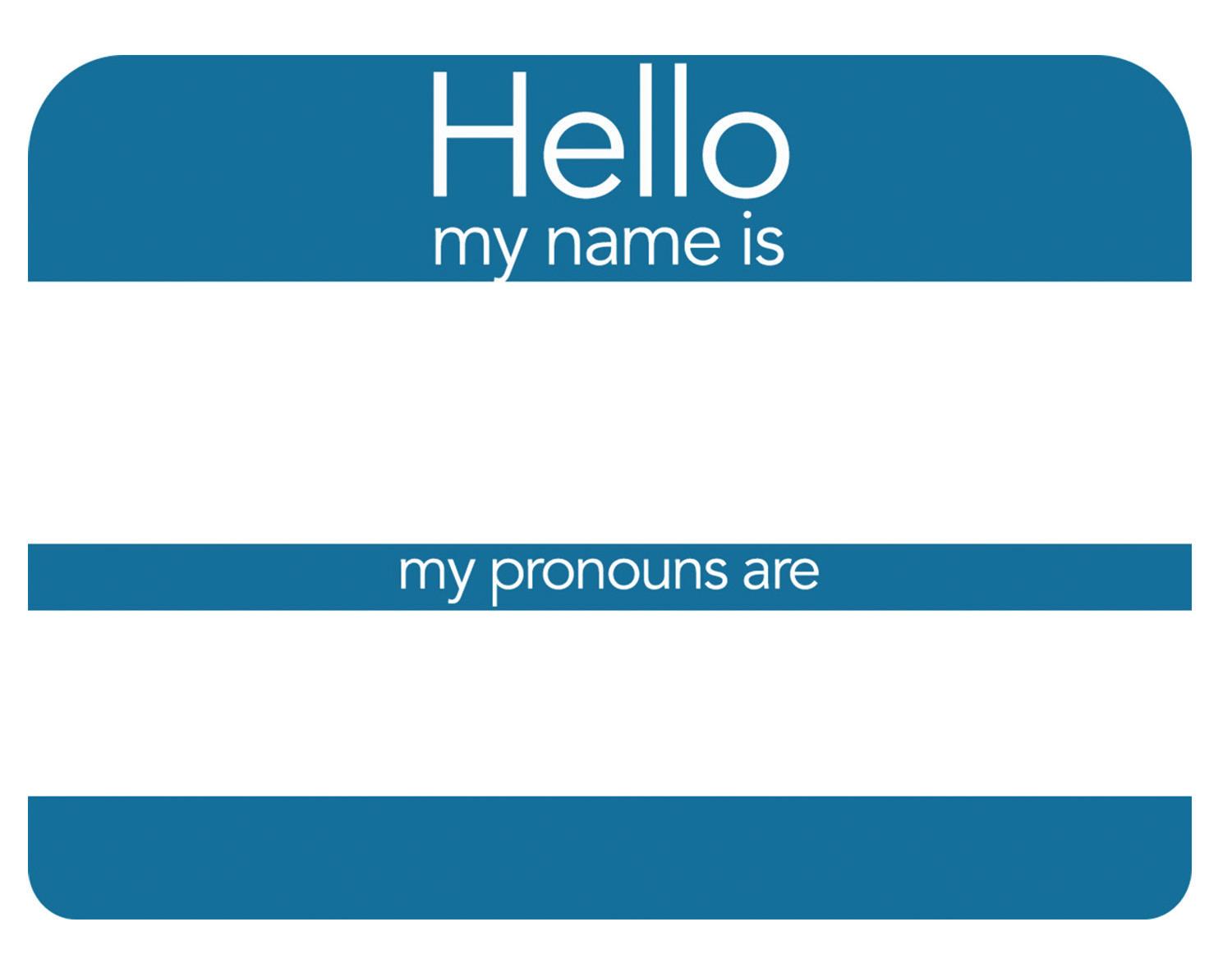
18 minute read
Casting ableism
The performative allyship of creating a film on autism using faulty research
Wikipedia Commons Actress Maddie Ziegler posing in front of a display for dance companies. Right: Actor James Cordon glancing behind his left shoulder while walking. Casting neurotypical people to play disabled or autistic characters is ableism. Hollywood is entering murky waters and demonstrating their ignorance by hiring orthodox actors.
Advertisement
Sia’s newest film, Music, depicting a non-verbal autistic girl, is problematic. The movie is about a young non-verbal autistic girl named Music who is taken into care by her half-sister named Zu. Zu, a sober drug dealer, struggles with the new challenges as Music’s sole guardian.
While we need to see people with disabilities in film making, Maddie Ziegler - a verbal and non-autistic actress - plays the role of Music. Sia hired long-time companion Ziegler for the job rather than hiring an actress that is a part of the autistic community.
Before Ziegler, they did have a non-verbal actress who eventually resigned from the film due to it being “unpleasant and stressful.” It is questionable that Sia turned to previous companion Maddie Ziegler rather than hiring another actress from the autistic community. Ziegler allegedly had her concerns about taking on the role as she was concerned that the autistic community would think she was “making fun” of people on the spectrum. The predicted suspicions arising from Ziegler should have been their first clue that they were committing acts of ableism.
Sia has now openly come out and spoke about why she wanted Ziegler for the role of Music:
“I realized it wasn’t ableism. I mean, it is ableism I guess as well, but it’s actually nepotism because I can’t do a project without her [Ziegler]. I don’t want to. I wouldn’t make art if it didn’t include her.”
It is completely fine if Sia wants to include Ziegler in her projects. However, she could have given Ziegler a role to represent a neurotypical person who could have easily fit into the plotline. Sia did not have to take away an autistic individual’s opportunity to complete the movie rather than giving the part to Ziegler. The dismissal of the first actress and rapid replacement of her with Ziegler demonstrates that Sia never really planned to represent autistic individuals within the film accurately. Nor did she want to adapt to help the young autistic actress thrive within her role, which is essentially the movie’s plot. So here we are once again, watching a neurotypical actor play the role of a disabled character. It is incredibly disheartening and offensive to the autistic community to watch ableism unfold for what seems like the millionth time. We are now entering an era where we need to diminish the Hollywood casting norm of hiring neurotypical characters to play something they are not. We need to re-analyze the praise for an actor or actress being “brave” for playyou judge it? FURY.” Despite Sia’s “three years of extensive research” put into the movie, there were still scenes with improper techniques when dealing with an autistic meltdown. A scene from Music, which Autreach leaked on TikTok, shows the physical restraint of Music by Zu during a breakdown. The act of prone restraint within the autistic community is heavily protested as many physical constraints have ended in the harm and even death of people with autism. Sia’s spectrum of research was too narrow, but considering her own ignorance in casting and defensive attitude to criticism there is the possibility that she may have ignored critiques from advisors. Sia later tweeted that the scene would be removed from the
movie, and there would be a warning at the beginning of the film.
The entire scenario screams right idea, wrong context. I want to see more films about people with disabilities and how they live, and how we can be more accepting of them. I do not want to see depictions from actors outside of the disability spectrum, or to perceive them as “weak” or “in need of help.” All people are prone to mistakes and growth, and there is no hierarchy among humans.
Enabling non-autistic actors is not a recent occurrence. We see Freddie Highmore in The Good Doctor, a neurotypical actor
– Gillian Massie
ing a disabled character. They are people just like the rest of us. They do not need to change because of their disability, and casting agencies do more harm than good by stripping opportunities from actors from that community.
Sia’s aggravation of the autistic community’s protests shows that she is utterly tone-deaf to the situation. Rather than taking the advice of care aids and people with autism, it took her months to take responsibility for enabling Ziegler to play Music. Sia’s tweet to protestors of the film shows undistinguished anger: “Grrrrrrrrrr. Fuckity fuck, why don’t you watch my film before playing an autistic man. Dustin Hoffman’s portrayal of Raymond Babbitt in Rain Man earned him an Academy Award for Best Actor. Leonardo DiCaprio also received an Academy nomination for Best Actor playing the autistic brother of Johnny Depp in What’s Eating Gilbert Grape. These actors where heavily applauded for their extensive research into the life of an autistic individual, but little is said about giving the opportunity to a person with autism. The Hollywood Foreign Press Association have also nominated Music for Golden Globes for Best Picture and Best Leading Actress for Kate Hudson, who plays Zu. Not only is Hollywood enabling films to cast typical actors, but they are also rewarding them.
Casting ignorance within the film industry does not just impact the disability community, but every other marginalized community. We have recently seen James Corden playing a flamboyantly gay man in The Prom while he is a straight man. Gal Gadot is staged to be the next Cleopatra, which has faced criticism of whitewashing. Finally, Scarlett Johansson was cast as a trans man in Rug & Tug before quickly withdrawing from the movie due to backlash in 2018. These three A-listers show that your name is more important to casting rather than hiring a person of the category.
Over 18,000 people have signed the petition to cancel Music, the film that has hurt and offended the autistic community. The lack of sufficient research combined with casting ignorance shows that the film is an inadequate and harmful representation of autism. My friends with autism are some of the kindest, most creative, and most brilliant individuals I have ever met, and stripping them of acting roles in favor of orthodox actors increases stigma.
Here is the petition against the release of Music: https://www.change.org/p/siacancel-the-film-music
Self-love: More than simply treating yourself
Learning to love myself in my love languages
Few mental health tips have captured the attention of the media in the way self-care has. Part of this would be due to relatability; even if you aren’t living with a mental illness, you can relate to being bogged down by life and to feeling a boost once you start doing the things that make you excited about life again. It could also be due to the profitability of the fad which business models have picked up on, with the anthem of “treat yourself” being pasted on all modes of advertising so that their business can profit off of your self-care. While treating yourself can give a boost, it also puts you in that business model’s cycle and you condition yourself in a way that doesn’t line up with the purpose of the practice. Woke up feeling defeated? Buy something to feel better (so they make money). Everything went wrong at work today? Buy something to feel better (so they make money). Had a fight with your partner and you need to unwind? Buy something to feel better (so they make money). That’s not to say that it’s inherently wrong to treat yourself if you’re having a rough day; sometimes that little boost can be enough to bounce you back to the right headspace so you’re better able to problem solve. The pattern I’d like to point out is that the “treat yourself” method doesn’t actually address what got you to a place where you had to treat yourself just to feel okay again. It gives you a habitual behaviour to perform that temporarily makes you feel better, but it does nothing to improve the circumstances that brought you to that low. Desmond Tutu said “There comes a point where we need to stop just pulling people out of the river. We need to go upstream and find out why they’re falling in.” In regards to mental health, that means that when we see this many people spending money that they don’t have just for the dopamine boost, we need to do more than help them through it in the moment. We need to take a critical look at the factors that are causing people to be swept up in this cycle of behaviour, and at what can be done differently.
We do need the reactive approach of helping people out of the river when they fall in, but we also need to be proactive in minimizing opportunities for people to
fall in. To balance this hot take with some constructive content, I will share some of the things I’ve recently learned on building a habit of self-compassion through intentional self-love, not just self-care. You have my unwavering, research-supported, 100 per cent guarantee that this approach will not work for everybody. Part of the “intentional” aspect of self-love is discovering in what ways you need love, and I can’t do that for you. What I can do is share how I’ve been making progress by exploring so far, with the hope that it can set a guard rail against the river for a few folks at least.
The idea of love languages is what I’m going to be drawing on, using the ways that I’m learning to show love to myself through my own love languages. There are five areas in love languages – quality time, acts of service, gifts, physical touch, and words of affirmation – and each person has a slightly different preference for the areas they use to give and receive love. To figure out which I preferred, I thought about examples of experiencing each and how those experiences impacted me both short-term and long-term.
For example, if you find you really benefit from the treat yourself method, chanc-
– Holly Worby
es are that gifts and acts of service would be in your preferences as you’re choosing to go out of your way to do something for yourself, and you’re putting in the thought to get yourself something that will make you smile. However, when it’s a habit behaviour rather than intentional self-love, all it does is regulate your emotions in the moment (which, again, is sometimes needed). The easiest way for me to stay intentional in my self-love is by making sure I’m not doing whatever I’m doing based on external motivation. I have had people tell me for decades that I need to go easier on myself and talk to myself like I’m someone I care about because, I’ll admit, that is not one of my strong suits. I even found a quote in high school that summed up the advice: “If there were someone in your life who talked to you the way that you talk to yourself, how long would you put up with that treatment?” The quote and the conversations with friends helped to bring my awareness to the issue, but I needed to be intentional to understand.
Words of affirmation is possibly my top preference for both giving and receiving love, but I’d never thought to intentionally love myself in that way. Normally when I’m responding to my thoughts or observing my own behaviour, I am frustrated with myself and taking it out on myself. When others take their frustration out on me I can recognize it and communicate that it’s inappropriate, but I was blind to the fact that I was doing it to myself until I stopped to think about it. I also love thoughtfully complimenting and encouraging others, but I realized I hadn’t been taking that constructive approach with myself.
The good news? The way that I talk to myself is in my control. I am still imperfect in my practice, but sometimes when I start getting frustrated with myself now, I can pause and ask myself how I’d talk to a friend with the same issue and then take that route. When I choose to talk to myself in that way, I’m actively deciding to show myself compassion. In a world where we’re condition to critique ourselves and pursue an ideal, self-compassion is a revolutionary act.
holly worby op-ed editor
PxHere
A person staring at their reflection in a bathroom mirror.

How do we make things right after we get them wrong?
More and more professors in my classes, administrative staff, and coworkers in my life have begun introducing themselves with their pronouns, including them in their e-mail signatures, and using gender-neutral language wherever possible. A few have even changed their pronouns, or at least introduced the ones they prefer for the first time. It is important to make this a neutral part of socializing. Personal pronouns and gender identities are not taboo subjects; they are information we often need to exchange so that we can respect the way a person wants to be spoken about, cisgender or not. That being said, when administrative staff in particular use these as markers of acceptance for trans and nonbinary people, that needs to be backed up with a consistent understanding of what trans students deal with.
In this year’s Alumni Awards at the University of Regina, the Distinguished Alumni Award for Humanitarian and Community Service was won by the past executive director of UR Pride, who made possible initiatives like Monarch Mental Health and Colourful Campus Housing. These important contributions were made for the sake of 2S and LGBTQ+ students’ safety and security, precisely because many of these students do not feel safe enough on campus. Because of the significance of this work for queer and trans students, it was a particularly heinous error when the initial announcement of the award referred to the recipient with a name that they do not recognize.
Although this error is no longer visible on the U of R website, it is not something a person forgets, and the students, staff, and faculty need to look at it as a serious undermining of any message in support of diversity. Neglecting or refusing to call a trans or nonbinary person by the name they go by (deadnaming) causes serious distress and shows a great lack of care.
What’s more frustrating about this constant struggle for respect is that, in general, whenever a mistake like this is made, cisgender people tend to treat it like a public relations embarrassment instead of demonstrating a genuine desire to learn. Trans and nonbinary people often have to fight and have deeply humiliating conversations just to be recognized accurately for their work. Being seen for your studies or work but being misgendered can feel like not being seen at all, and many trans people back out of the spotlight or of jobs that require a public presence simply because of the emotional toll that takes.
This is a short list of things I wish more people kept in mind when working with trans and nonbinary people, and especially when recognizing them for their accomplishments: • Ask for people’s names - ask them directly. Not even all cis people use the same name in every situation. Using the wrong name to refer to a trans person can actually put them in danger of violence if the wrong person recognizes it. • Get pronouns right. Sometimes people will have more than one set (“he and they”) or pronouns you may have not heard before (“ze and hir”). Even if this is a new concept to you, it isn’t to trans people, so when you treat it like it’s unheard of, it’s actually you who comes off as looking unreasonable. Google is your friend when it comes to these things; if you’re afraid of using a person’s pronouns incorrectly, most people are very willing to guide you through it if you’re genuine about wanting to know. • You really don’t have to explain that a trans or nonbinary person is trans or nonbinary every time you write about them, or explain what that means when it’s not relevant. You can just use their pronouns the right way. Making marginalized people hypervisible unnecessarily, or leaving room for controversy in a story about them, can lead to harassment and even mockery from transphobes. • Sometimes a person’s identity, their pronouns, or their name will change. Because there are so few resources for trans people out there, it can take a long time to understand themselves. This is why it’s important to do your due diligence and make sure that you get the absolute basics of respect for someone you’re working with - their name and pronouns - correct.

Ted Eytan A blue and white introduction label with blank spaces for one’s name and pronouns.
marty grande-sherbert
staff writer
The personality types of shoppers
Are you a “control freak” or a “chatterbox”?

Pixabay A person orders food at a counter in a coffee shop.
Working in customer service is fun, because it throws varied experiences at you every day. Whether work is busy or slow, I love observing the personality types of customers, and I continue to feel intrigued by how different people can be. I have tried to describe, in a (hopefully) funny manner, how interesting it is to come across these different personalities on a daily basis.
The first kind of customer that comes to my mind is the “the Chatterbox.” It’s easy to spot them in a crowd. They are habitually on the phone or with a friend, and constantly talking. Chances are, they might even be yelling on the phone to cut out the noise around them, like the Friends song playing in the store for the 100th time. If they are with a friend, the Chatterbox will not notice that they have lost their friend’s long ago. In terms of their shopping habits, Chatterboxes tend to pick up items which they most likely do not need, and end up changing their minds and placing them on the shelves just before they hit the cashier on the way to checkout.
The next kind of customer is “the Supersaver”; they are the smartest breed of shoppers. They regularly know which items are discounted and which are not. They are ready with the weekly flyers and ads from around the city, and they are likely to have a bunch of coupons stacked with them as well. The quantity of items purchased by these customers is either huge or small, but nothing in between. They have quick eyes that can spot any mismatch in price between the display shelves and the scanning of an item, and they never hesitate to ask for compensation. It is quite possible that they have a good rapport with store employees in order to know when items will be sold at clearance price.
Another type is “the Control Freak,” and they are relatively easy to spot. They usually have items organized categorically in their carts with a list in their hands. They are likely to call the department manager if they find the green apples are advertised in the weekly flyer, but not available in the store. They hate being directed to any random checkout lane, and always prefer to let their favourite cashier touch their items. Control freaks aren’t bad people, they just know what they want and how they want it.
“The Observer” is an interesting kind of shopper. They observe items, objects and people in a way that even store management do not. They feel a sense of loyalty to the store, and are quick to report to customer service if they notice someone shoplifting. They are the ones who notice if the regular store greeter hasn’t been around in a while, and might even bring a get-well-soon card if they hear that the person is unwell, asking for it to be passed on.
Finally, the last kind of customer on my list would be those once-in-a-bluemoon shoppers who are rarely seen in the store. When they do turn up, they have two or three carts lined up with them, making sure they have enough supplies stocked for a month or two. These are customers who usually live several miles away from the city, and they tend to confuse entry and exit passages while navigating through the store.
Are there any types of shoppers you would add to the list? Do you recognize some of these? Try having some fun identifying them the next time you work or shop – maybe you will recognize yourself.
graphics
editors: sarah carrier, kate thiessen graphics@carillonregina.com the carillon | february 11 - february 17, 2021



